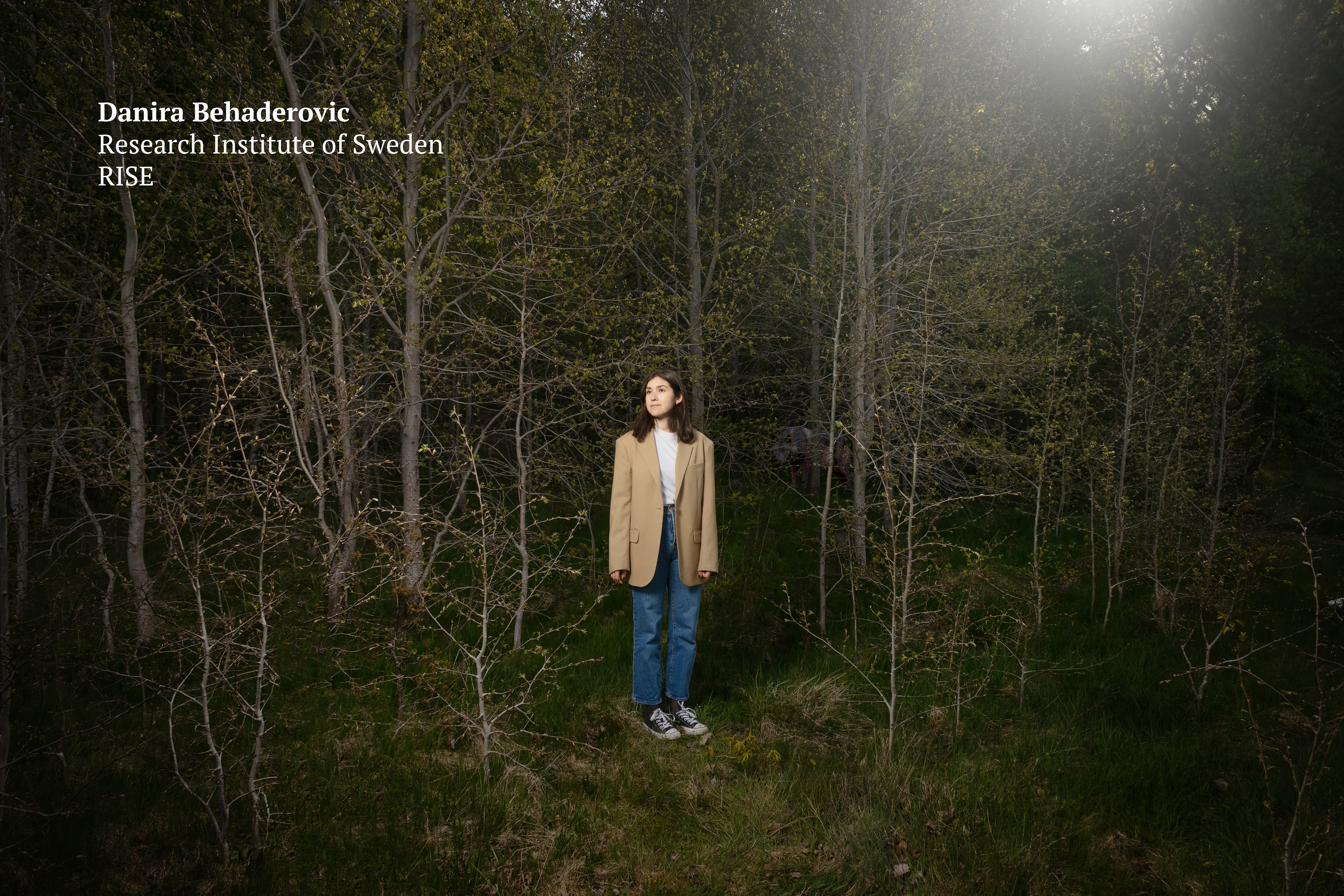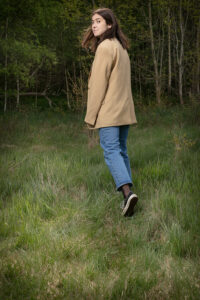Research Institute of Sweden (RISE)

The agronomist aiming to contribute to sustainable food production. Danira Behaderovic is an agronomist who, over the past two years, has worked on calculating carbon footprints and assessing other environmental impacts of food production. She works at the RISE research institute, in the Agriculture and Food department
Danira remembers that she has always been interested in food production and sustainability.
“Ever since I was young, I’ve had this interest, reading a lot, watching documentaries, and enjoying biology and other natural sciences at school. Having roots in the Balkans, where many still have a close connection to agriculture, may have also contributed to the interest. The profession of agronomy is a great mix of different subjects, such as biology and chemistry, with a focus on food production and agriculture. And everything ties back to the environment and sustainable use of natural resources,” Danira shares about her career choice.
During her education, she specialized in the environment with various elective courses. After graduating, she began working as a crop cultivation advisor and also trained as a climate advisor at the farm level. This gave her a unique feel for people and for the production behind all the data that is handled today at RISE when conducting life cycle analyses.
“That’s how I came into contact with LCA. I’ve attended Miljögiraff’s course on the Basics of SimaPro and then learned a lot from colleagues who have long experience with the program and LCA,” says Danira.
Learned life cycle assessment at work
Danira previously worked with data developed by RISE, in connection with climate advisory services, for example, but at RISE, she began conducting her own life cycle analyses and contributing to various projects. About 30 people work in the unit she is part of; Sustainable Consumption and Production.
Danira’s education and previous experience in the environment and agriculture have led her to the LCA of food, focusing on land-based food production.
“We develop national climate footprints for both animal production, such as pigs, lambs, milk, chicken, eggs, and plant-based products. We work on both national and international projects and also have our own climate database for food. Many actors, both private and public, use it as a tool in the climate transition from our consumption and production of food. But we also work directly with individual producers, analyzing how they can optimize their production based on climate and other environmental impacts, for example, what is significant and minor in their own operations. It can also involve various research projects,” she explains.
Conflicts of interest, carbon sequestration, and biodiversity
Nowadays, there’s much more discussion about carbon sequestration, i.e., land use and the carbon in the soil, as well as about biodiversity. Standardized methods are under development.
“Measuring biodiversity is difficult. Method development is happening in that area.
Asking which type of food can be produced in the most climate-adapted way is not entirely straightforward, according to Danira. She believes that one should not use the results of LCA to compete in sustainability between different types of food because the production conditions vary so greatly. However, it’s important to think from a system perspective about what kind of food production we should have to both maintain a good national food supply and meet various environmental and climate goals.
“What’s interesting is to develop one’s own production to improve, but also to dare to think new and find new business opportunities as what and how we eat changes and needs to continue to change. Emissions of greenhouse gases from food production are special; they are primarily biogenic emissions from, for example, land use. We cannot reduce these emissions to zero, but must find measures to reduce them as much as possible while maintaining food production. A measure that is good from one sustainability perspective may be worse from another,” she notes.
Communication big part of the work

Danira Behaderovic shares that a good strategy is simply to try to achieve more of the positive and less of the negative impact and, most importantly, to communicate with clients, farms, and target groups in a clear manner:
“We work broadly and try to measure – even though some parameters are difficult. We ask ourselves: what is it that has an effect? And we are aware that our insights must reach out to have any effect at all. Therefore, we carefully consider how to disseminate our analyses, reports, and statistics to different target groups and various actors. Communication is a very important part of our work,” she concludes.
Facts:
RISE is Sweden’s research institute and innovation partner. It is an independent research institute that collaborates with and works on behalf of the private sector, academia, and the public sector.
Contact: danira.behaderovic@ri.se
Photo by Pontus Johansson